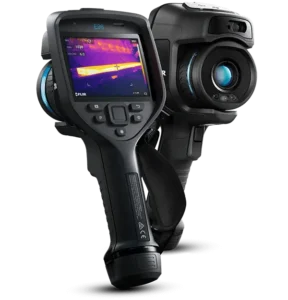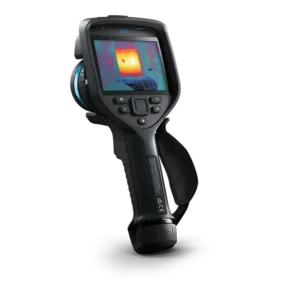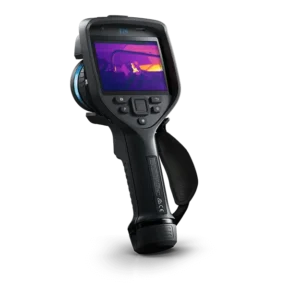 FLIR, now known as Teledyne FLIR, is a company with a long history in thermal imaging technology, tracing back to the invention of the bolometer in 1878, which detects electromagnetic radiation. FLIR Systems was officially founded in 1978 to develop low-cost infrared imaging systems, particularly for airborne applications. The company has been a leader in the field, acquiring other companies and expanding its technology to various commercial and industrial applications.
FLIR, now known as Teledyne FLIR, is a company with a long history in thermal imaging technology, tracing back to the invention of the bolometer in 1878, which detects electromagnetic radiation. FLIR Systems was officially founded in 1978 to develop low-cost infrared imaging systems, particularly for airborne applications. The company has been a leader in the field, acquiring other companies and expanding its technology to various commercial and industrial applications.
Early Developments and FLIR’s Role:
1878:
The bolometer, an instrument for detecting electromagnetic radiation, was invented, laying the groundwork for thermal imaging.
1978:
FLIR Systems was established to focus on affordable, high-performance infrared imaging systems.
1990s:
FLIR began leveraging its expertise in infrared imaging to develop handheld and laboratory systems for diverse commercial uses.
1990:
Acquired the industrial infrared imaging group from Hughes Aircraft Co., expanding its capabilities.
1998 & 1999:
Acquired Agema (Sweden) and Inframetrics (Boston, MA) respectively, accelerating their success in commercial thermal imaging.
Key Milestones:
Early FLIR cameras:
Focused on military and aerospace applications, including night vision and surveillance systems.
Commercial Applications:
FLIR’s technology expanded into various fields, including:
Industrial: Detecting temperature differences for maintenance and quality control.
Building Diagnostics: Identifying heat loss, moisture problems, and energy inefficiencies.
Security: Enhancing surveillance capabilities in low-light and challenging conditions.
Medical: Developing thermal imaging for diagnostics and monitoring.
FLIR ONE:
A notable product that brought thermal imaging to the consumer market with a smartphone attachment.
FLIR’s Evolution:
Acquisition by Teledyne Technologies:
In early 2021, FLIR was acquired by Teledyne Technologies, and the company is now known as Teledyne FLIR.
Continued Innovation:
Teledyne FLIR continues to develop new technologies and expand the use of thermal imaging across a wider range of applications.
FLIR’s history reflects a progression from specialized military and industrial applications to a more widespread use of thermal imaging technology, making it more accessible and affordable for various sectors
Advanced Thermal Imaging Camera
 The FLIR E96 is our first pistol-grip camera with 640 × 480 thermal resolution so inspectors can survey high-voltage, hazardous targets safely and quickly diagnose electrical and mechanical failures. The FLIR E96 offers complete coverage of near and distant targets through a range of lens options.
The FLIR E96 is our first pistol-grip camera with 640 × 480 thermal resolution so inspectors can survey high-voltage, hazardous targets safely and quickly diagnose electrical and mechanical failures. The FLIR E96 offers complete coverage of near and distant targets through a range of lens options.
 The FLIR E8 Pro is your must-have tool for locating and diagnosing electrical, mechanical, and building problems. Quickly pinpoint hot spots and easily identify problems with vibrant thermal imagery supported by FLIR-patented MSX® (Multi-Spectral Dynamic Imaging) enhancement.
The FLIR E8 Pro is your must-have tool for locating and diagnosing electrical, mechanical, and building problems. Quickly pinpoint hot spots and easily identify problems with vibrant thermal imagery supported by FLIR-patented MSX® (Multi-Spectral Dynamic Imaging) enhancement.
 The FLIR E86 is packed with high-performance features needed for fast, accurate detection, and when paired with a FLIR FlexView™ dual field-of-view lens you can instantly switch from wide-area to telephoto scanning. This 464 × 348 pixel thermal camera has an expanded temperature measurement range for easier detection of hot spots and hidden anomalies on electrical and mechanical assets.
The FLIR E86 is packed with high-performance features needed for fast, accurate detection, and when paired with a FLIR FlexView™ dual field-of-view lens you can instantly switch from wide-area to telephoto scanning. This 464 × 348 pixel thermal camera has an expanded temperature measurement range for easier detection of hot spots and hidden anomalies on electrical and mechanical assets.
 The FLIR E76 offers complete coverage of near and distant targets through a range of lens options. A step up from the FLIR E54, the E76 includes laser-assisted autofocus and 3 area measurement boxes. The 320× 240 thermal resolution produces crisp, vibrant imagery that can be enhanced with patented FLIR MSX® technology for added detail and perspective.
The FLIR E76 offers complete coverage of near and distant targets through a range of lens options. A step up from the FLIR E54, the E76 includes laser-assisted autofocus and 3 area measurement boxes. The 320× 240 thermal resolution produces crisp, vibrant imagery that can be enhanced with patented FLIR MSX® technology for added detail and perspective.